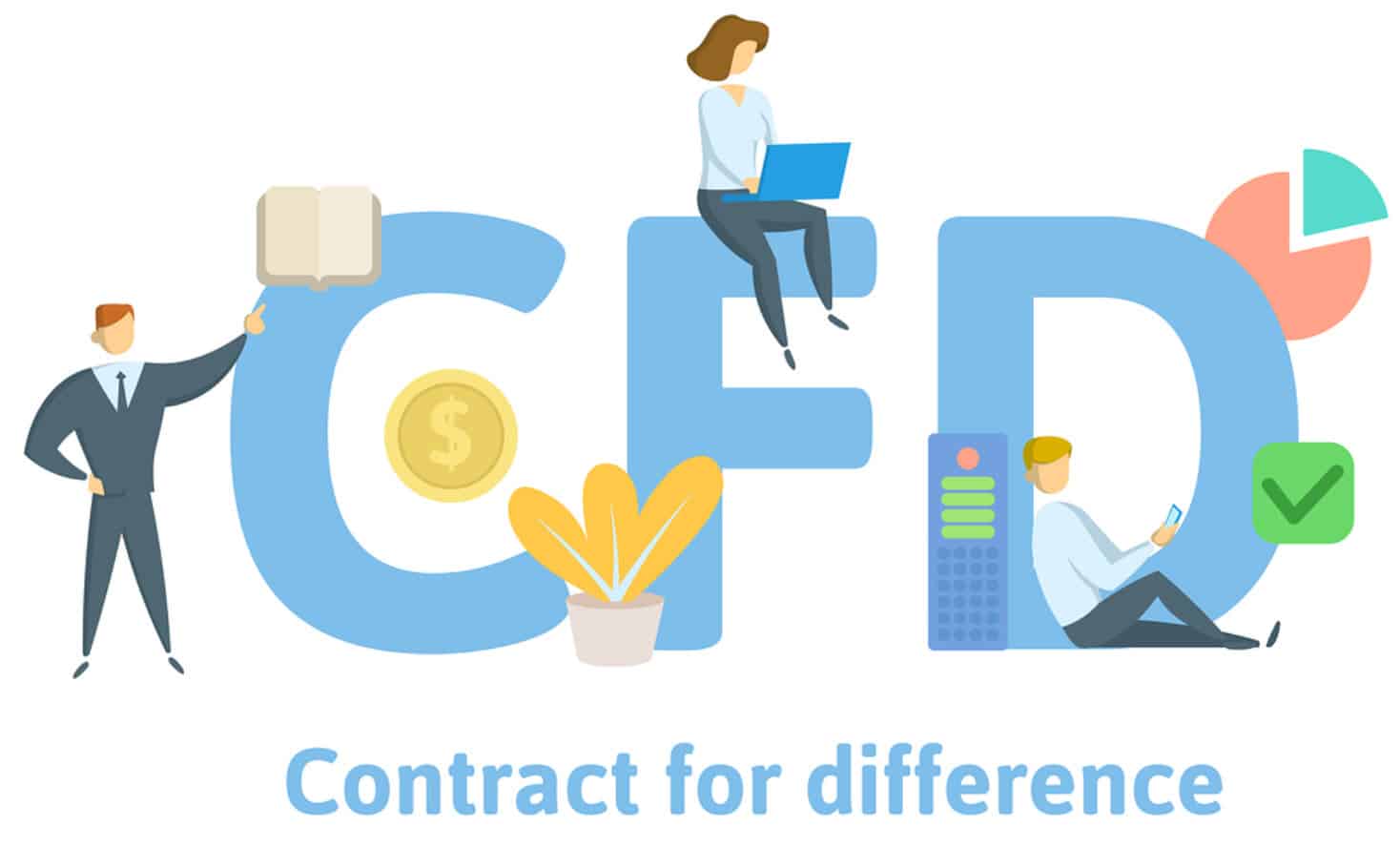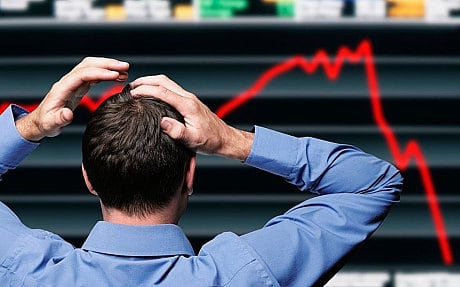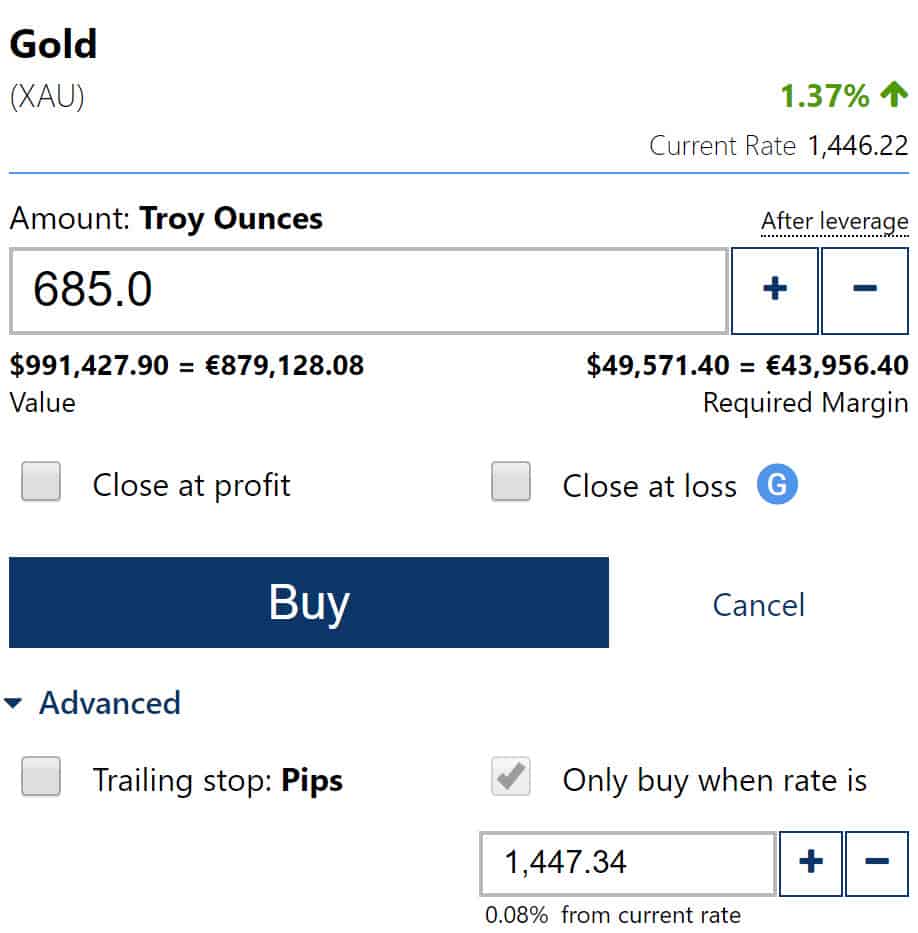What is CFD trading and how does it work?
CFD's or contract for differences have become extremely popular among investors. But what are CFD's exactly and how to invest in them? In this article you will read everything you need to know about this popular derivative.
Where can you trade CFD's?
Special CFD brokers are the place to be to invest in CFDs. Let’s take a quick look at two well-known and reliable CFD brokers:
eToro
Another reliable party where you can trade in CFD’s is eToro. At eToro you can use advanced analysis tools. This makes eToro very suitable for the serious trader who wants to be active in day trading. Use the button to open a free demo account with eToro:
Plus500
Plus500 has been fully optimized to guarantee smooth CFD trading. To go even one step further, investing in CFDs is the core and only business they offer. The Plus500 software is extremely user-friendly, and you can start trading CFDs on all known shares, commodities, index funds and currency pairs. A nice additional feature about Plus500 is the fact they offer a free of charge and unlimited demo which allows you to try out all possibilities.
What are CFD's?
A CFD is a derivative. This means CFD's always relate to an underlying asset. This could, for example, be an Apple share. The different parties come to an agreement to exchange the price difference between the opening (purchase price) and the closing (sell price) trade price of the underlying asset. CFD trading of the Apple share has many similarities with trading an Apple share directly.
Below you will immediately see what we discuss in the manual about trading CFD's:
- CFD trading: how can you trade in CFD's?
- Leverage: how can you apply leverage?
- Margin call: what is a margin call?
- Stop loss: what is a stop loss?
- Falling prices: how can you benefit from falling prices?
- CFD costs: what are the costs of CFD trading?
- Advantages & disadvantages of CFD trading.
How can you trade CFD's?
You can trade in CFD's at an online broker. When you trade in a CFD you always have two options:
- Buying: you speculate on a price increase in the underlying asset.
- Shorting: you speculate on a decreasing price of the underlying asset.

How can you use leverage?
An important CFD feature is the possibility to make use of a so-called leverage. When you use leverage, you only have to invest a small part of the total investment. The maximum leverage ratio which can be applied by a private person is 1:30. Leveraged trading has the advantage it can be used to achieve larger profits. A clear disadvantage is the bigger risk on losses.
Tip: using a high leverage is an optional feature, it’s all up to you whether to use it or not!
But how does CFD leveraged trading work? When you open an order, you need to specify the trading amount. A leverage ratio of 1:5 is used if the balance on your account is $1.000, and you decide to buy $5.000 of CFD shares. If you apply leverage both your potential profits and your potential losses increase:
- When the CFD share increases with 10% your profit would be 50%.
- When the CFD share decreases with 10% your loss would be 50%.
Leverage allows you to do a bigger investment with a smaller amount of money. Nevertheless, it is important to remember that trading with leverage is a risky affair. When you do not have enough money on your account you can experience a margin call. With CFD trading, you can lose your entire investment.
Watch out for the margin call
Brokers do not want to lose money, and therefore they have implemented a built-in protection layer. After all, a broker doesn’t want to be accountable for your losses. Therefore, the use of a leverage goes hand in glove with a margin. When the asset price decreases with 20% all the money on your account will be lost when you apply a 1:5 leverage.
If the price would further decrease to 21%, the broker would have to invest extra money. To prevent a similar situation, brokers make use of a margin call. When your balance moves towards $0, the broker will request you to deposit money to avoid closure of the position. When you do not deposit additional funds, the broker will be forced to close your positions to prevent them from making a loss themselves.
The margin call can be a very annoying feature. It’s therefore of crucial importance to carefully consider beforehand if you can compensate the expected price fall before the actual price increase when buying a CFD. If you are not careful you risk losing your entire investment on a single trade.

Using a stop loss
A proper way to prevent a margin call, is to make use of a stop loss. Installing a stop loss is pretty easy within the CFD trading software. The stop loss indicates at which loss percentage your position will automatically close.
It’s wise to always use a stop loss. That way, you can prevent one negative position from blowing up your entire account. When you want to use a guaranteed stop loss you will have to pay an extra commission. In exceptional market situations (such as a market crash), a delayed stop loss can sometimes occur. With a normal stop loss, you would have to pay for this delay. However, with a guaranteed stop loss these costs are covered by the broker.
How can you use orders?
Besides using a stop loss when trading CFD's, you can also use orders. An order will allow you to set a value at which you will automatically open a certain position. A stop loss can ensure your loss does not increase too much. You can also set a take profit which indicates the level at which you automatically take your profit.
By combining all these features and functionalities you can automate CFD trading to a large extent. Logically, it all starts by executing an extended analysis. Nevertheless, when you know all the ins and outs and what to do at which moment, you won’t to have to sit in front of your computer 24/7 anymore. This will save you time and some blurry eyes!

Placing an order at a CFD broker.
Profit from falling prices
Another clear advantage of CFD trading is the fact you can also benefit from falling prices by going short. You can go short by pressing the short button within your CFD broker account. By going short with your CFD, you will directly profit from falling share or asset prices.
When you buy shares directly, it is rather difficult to profit from falling prices. CFD trading nevertheless makes it possible to profit from a wide range of different market fluctuations and circumstances.
What are the CFD trading costs?
CFD trading is unfortunately not free. When you trade CFD's you do not pay a fixed commission rate. This is favourable for traders that want to invest small amounts of money. You do pay a so-called spread when investing in CFD's.
The spread is the difference between the purchase and the sell price. Depending on the volume a spread on an asset can increase or decrease.
When you trade in CFD's you will also have to consider the financing charge. When you trade in CFD's, the broker lends you money to hold your position. With a 1:5 leverage ratio 80% of the money belongs to the broker. To maintain this position, the broker charges a daily financing charge.
This financing fee will only be charged when you decide to hold a position overnight. The financing fee percentages are always displayed next to each CFD. Logically, The transaction costs on a daily basis are pretty low. CFDs are nevertheless not really favourable as option for long-term investments. In the long run the financing fees quickly rises to a few percent and this will be at the expense of the profit.
Trading CFD’s in practice
When you start trading CFD's you might notice that the value of a CFD is closely related to the value of the actual stock. This means that you do not have to do complicated calculations when you start trading CFD's. Many other derivatives require quite some calculation effort to determine your profit. Determining your return on CFD's is a lot more convenient. Let’s exemplify this by using a fictitious investment on an Apple CFD:
In the first example we are buying a CFD. Let’s suppose you are buying a CFD on the Apple share. The current price is $200. Your account balance is also $200. You decide to buy 5 CFD shares by using a 1:5 leverage. The share price then increases from $200 to $220. In this case, your profit is $20 per share. You have achieved a 50% profit instead of a 10% profit.
You can also invest in a CFD to speculate on a price fall of the CFD Apple share. In the previous example the CFD Apple share price was $200. Let’s suppose you also have a $200 balance on your account. You again buy 5 shares, and you use the 1:5 leverage. The share price increases again from $200 to $220. In this particular case, you lose $20 per share. The leverage has caused a 50% loss instead of a 10% loss.
By trading in CFD's with leverage you are magnifying your profits and losses. A broker’s software will often show you in real-time how much you have gained or lost. We nevertheless do advise everyone to make this kind of calculations before opening a position. This prior calculation will help you to determine whether the trade justifies the risk.
Furthermore, it is important to remember that although it is easy to understand the underlying mechanism of CFD's, CFD investing is far from easy. You have a high probability of losing your full deposit.
What makes CFDs so interesting: the advantages
- You do not pay fixed transaction costs on CFD's.
- You can use a leverage to magnify your profits (and losses!).
- You can speculate on falling prices by going short.
- By using a stop loss, you can limit your potential losses.
- All possibilities can be tested via a demo.
- You can trade in various known assets.
- CFD trading starts at only $100.
CFD disadvantages
- The margin call can make you lose your entire investment.
- You pay a financing charge for long-term positions.
- Your losses can quickly accumulate.
Conclusion about CFD speculation
Trading in or speculating with CFD's can be exciting. CFD's offer a lot of flexibility and possibilities. CFD's can therefore be more attractive than many other derivatives. But don’t be fooled by the simplicity at first sight. A CFD can be a negative game changer and when you take a wrong decision, you can lose your entire investment in the blink of an eye. Therefore, the first step should be to practice using a free demo. Use this button to open a free demo account and start practising trading in CFD's:
Information about trading CFDs
Start trading CFDs today
Tutorials concerning trading in CFDs
- How does trading in CFDs work?
- Trading with leverage explained
- Managing your positions (take profit, stop loss, orders...)
- Profits and losses (balance and margins)
- The cost of trading in CFDs
CFD trading fees: how much does it cost to invest in CFD’s?
Are you curious about the costs of investing in CFDs? In this article, we will discuss the fees. It is crucial to be aware of transaction costs before investing in CFDs. What costs do you pay when trading CFDs? Commission: with some brokers, you pay a commission when you open a CFD trading position. Spread: … [Lees meer]
Investing in CFDs: everything you need to know! Comprehensive Course.
Do you want to invest in CFDs but don’t know where to start? In this comprehensive course, I discuss how to open your first CFD position! I also give you some tips that can help you on your investment journey. Within this guide, I use Plus500: however, you can also follow the steps in this … [Lees meer]
Leverage: trading with leverage explained
When you invest you can apply leverage. But what is leverage? Simply put, leverage makes it possible to make a larger investment with the same amount of money. This allows you to take greater advantage of price fluctuations. But how does leverage work and what are the risks of trading with leverage? What is leverage? … [Lees meer]
Opening positions when trading CFDs
If you want to invest in certain security via CFDs, you can open a position. In this article, we will explain how you can open and manage a trading position. For this tutorial, we used Plus500‘s trading platform. Once you understand how opening a position with leverage works, you are ready to start investing with an online … [Lees meer]
Profit and loss on CFDs: balance explanation
In this article we look at how the profit or loss on investments in CFDs is calculated. It is good to read the article on how the leverage works when you do not yet know exactly how it works. Leverage plays an important role when trading CFDs. Understanding your balance with an online broker At … [Lees meer]
What are the advantages of CFDs?
CFD trading is still very popular. But what are the biggest advantages and disadvantages of investing in CFDs? In this article, we list the most important advantages so you can decide if trading in CFDs is right for you. Do you also want to know the disadvantages of CFDs? Click here! What are CFDs? Before … [Lees meer]
What are the advantages of CFDs?
CFD trading is still very popular. But what are the biggest advantages and disadvantages of investing in CFDs? In this article, we list the main benefits so you can decide if trading in CFDs is right for you. Want to know the disadvantages of CFDs too? Click here! What are CFDs? Before we delve into … [Lees meer]
What are the disadvantages of CFDs?
Are you curious about the disadvantages of investing in CFDs? In this article, I discuss the biggest drawbacks of trading in CFDs. Not sure what CFDs are? I explain it here! What are the main cons of CFDs? Leverage risks: leverage brings extra risks Financing costs: financing costs make long-term investments impossible. Time: you need … [Lees meer]
